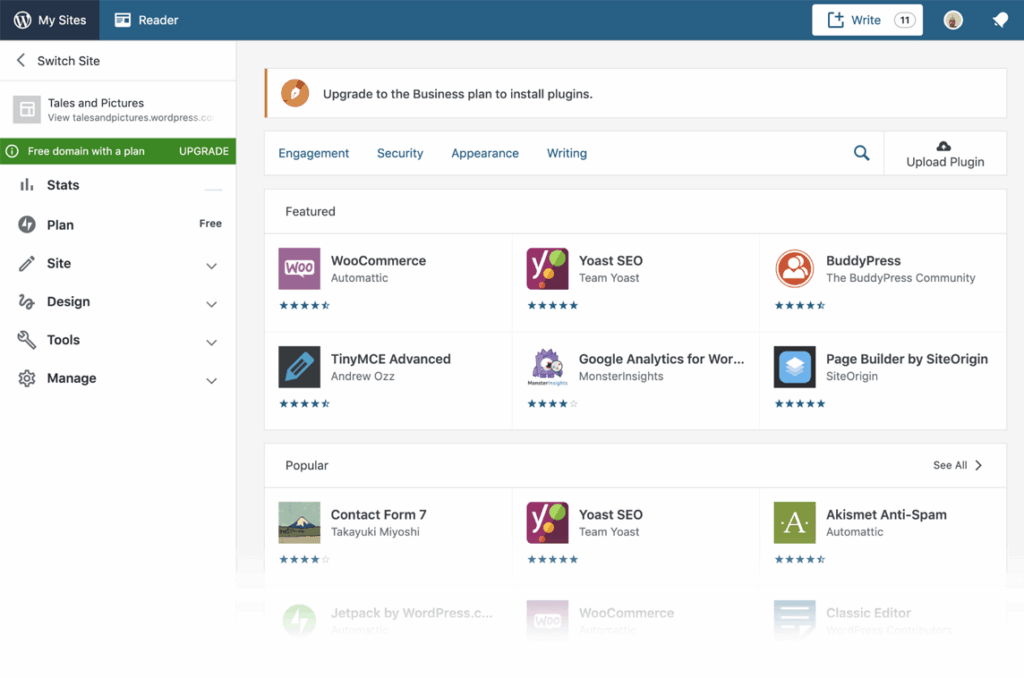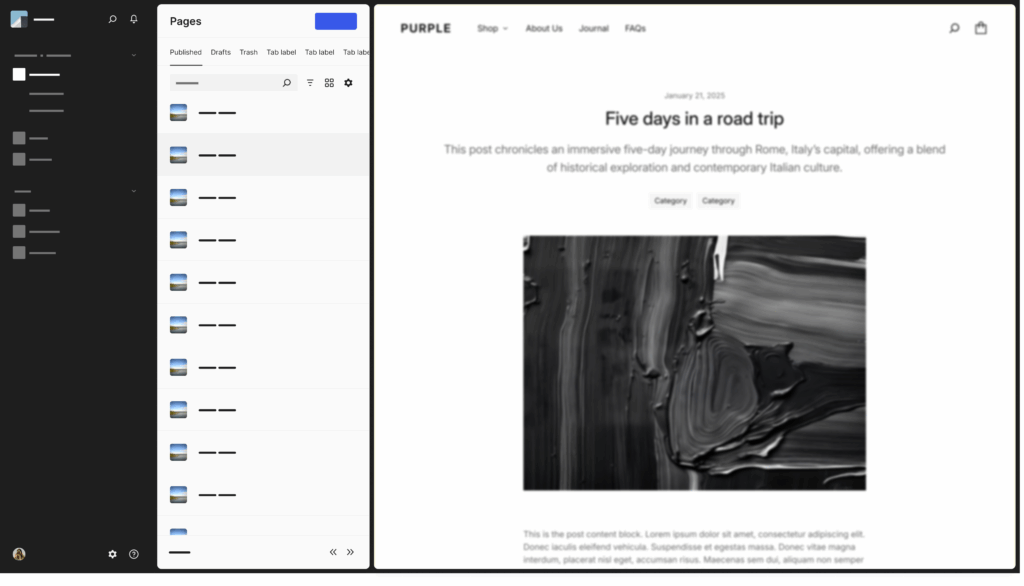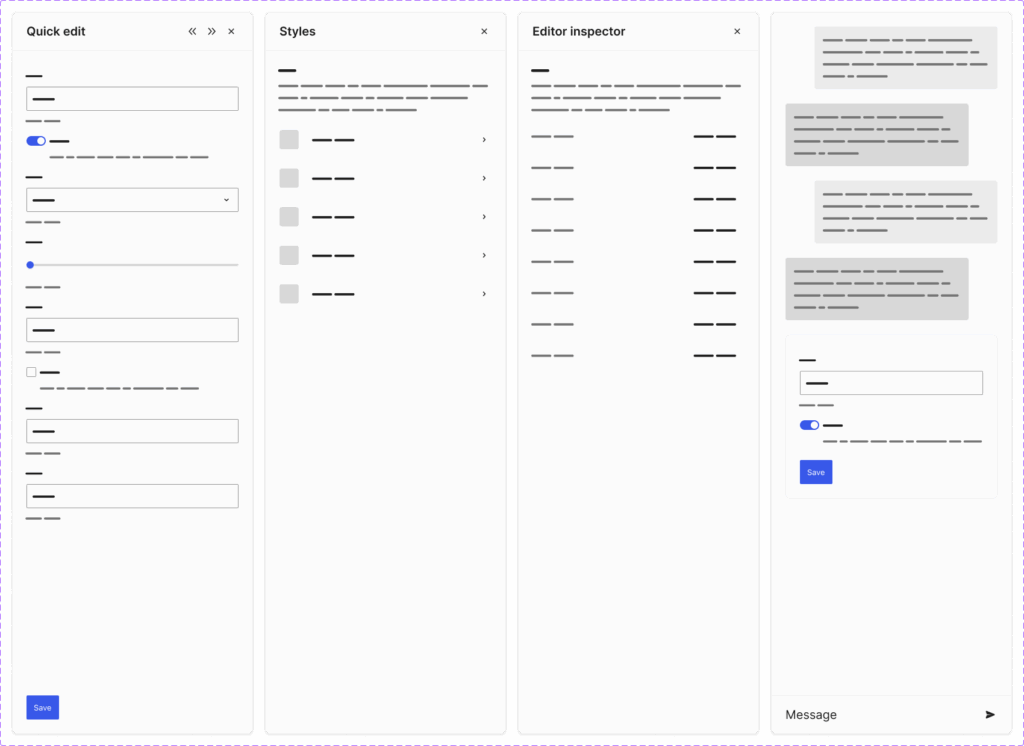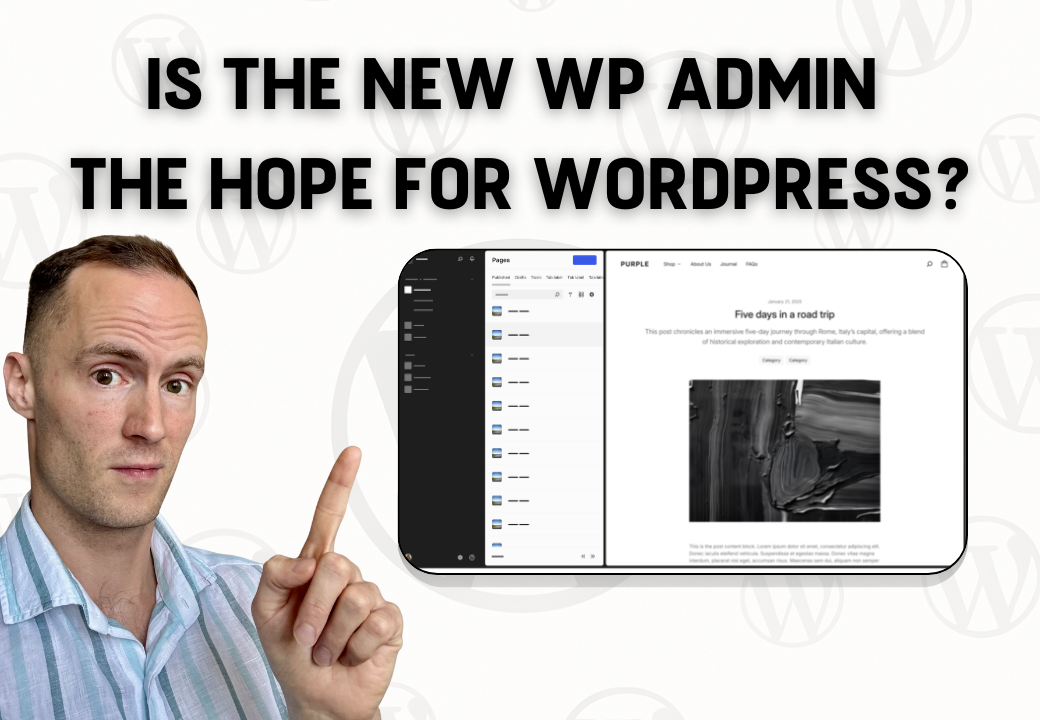After the last WordCamp EU in Basel I gathered a lot of feedback and wrote my takeway: What’s holding WordPress back? emphasizing that WordPress is loosing traction for new customers:
“It’s obvious to say that the current WordPress ecosystem is waaay too complicated for new users. Yes, in the long run, WordPress offers huge benefits like ownership of content, freedom to migrate, and powerful scalability with plugins. But that value is completely lost if the first experience pushes people away.”
The Main Problem: First-Time Users in WP Admin
WordPress still works pretty well for agencies and experienced users. But first-time users are often lost right away. The bad experience starts from the very first contact with WordPress itself – WP Admin, which has remained has remained mostly unchanged since WordPress 3.8, which was released in December 2013!!!
Just to remind you, since 2013, the following happened:
- 2015 – Mobile traffic officially surpassed desktop (and Google’s “Mobilegeddon”)
- 2018 – Shopify becoming no2 e-commerce platform
- 2019 – Covid tech boom with so many businesses going online
- 2021 – Rise of headless CMS and ecommerce (e.g. Shopify + Next.js)
- 2023 – Surge of generative AI tools
And yea, WordPress admin stayed pretty much the same… Even for someone like me, who knows what to click, it’s still frustrating. I mean come on:

The Numbers Are Not Great
Looking at W3Techs CMS market share report, WordPress still holds the largest market share but it has been gradually declining.
At the same time, platforms like Wix and Shopify continue to gain ground. It’s clear more users prefer simpler tools. The WordPress community remains strong, but the product experience is falling behind. Let’s don’t forget, hosting providers are a huge beneficiary of WordPress itself. It’s a simple symbiosis – if WordPress looses to SaaS, hosters loose their clients too.

Clearly all the open source platforms are loosing. Is that any comfort, though?
WordPress.com had their own WP Admin (until 2025)
What’s interesting is that WordPress.com has noticed the need of a better WP Admin and offered their own “Calypso” interface:

What’s even more interesting? As of early 2025 they’ve transitioned to the standard wp-admin experience. Why? Because it was hard (and expensive) to maintain.
What about the users? Well, looking at the feedback (on the announcement post) the users were not very happy about that and actually confirm what I say – classic WP Admin from 2013 is the real pain of WordPress…

The hope? The new WP Admin is already in progress by the Core Team!
Luckily, something is finally moving. The WordPress core team has shared early concepts for a new WP Admin interface on GitHub. As a matter of fact, this topic has actually been under discussion for two years. At WordCamp Europe, Matt Mullenweg mentioned it as one of WordPress’s key projects right now, which could mean it is getting higher priority.
The preview looks really promising:


Unfortunately, the task is still in the planning stage and written as a working draft. People are discussing how to break the WordPress admin into smaller parts like menus, lists, forms, and widgets so they can be reused and arranged in different ways. There is no set timeline nor we’re anywhere close to the final version so it seems it will take many months to be finished.
But Don’t Expect a Miracle
This new admin won’t fix everything overnight. Not only does the design need to be finished, but it also has to be developed, tested, and most importantly, made compatible with all the plugins and custom stuff built around WordPress. It’s one of the biggest changes in WordPress in years.
And even with a shiny new admin, problems like SEO, backups, speed optimization, or security still require plugins or third-party tools. In my opinion, these should be part of the core experience, or at least bundled by hosts in a smart, helpful way.
That’s where I think hosting companies can shine. Instead of shipping barebones WordPress installs, they can offer full setups with the right defaults and tools, making WordPress feel modern, safe, and friendly right from the start.
Konrad Keck
Web hosting enthusiast, connecting technical expertise with business strategies. Revolutionizing the industry with automated, user-focused solutions since 2011. Founder of various innovative solutions including ModulesGarden, PanelAlpha, MetricsCube, and EasyDCIM.
